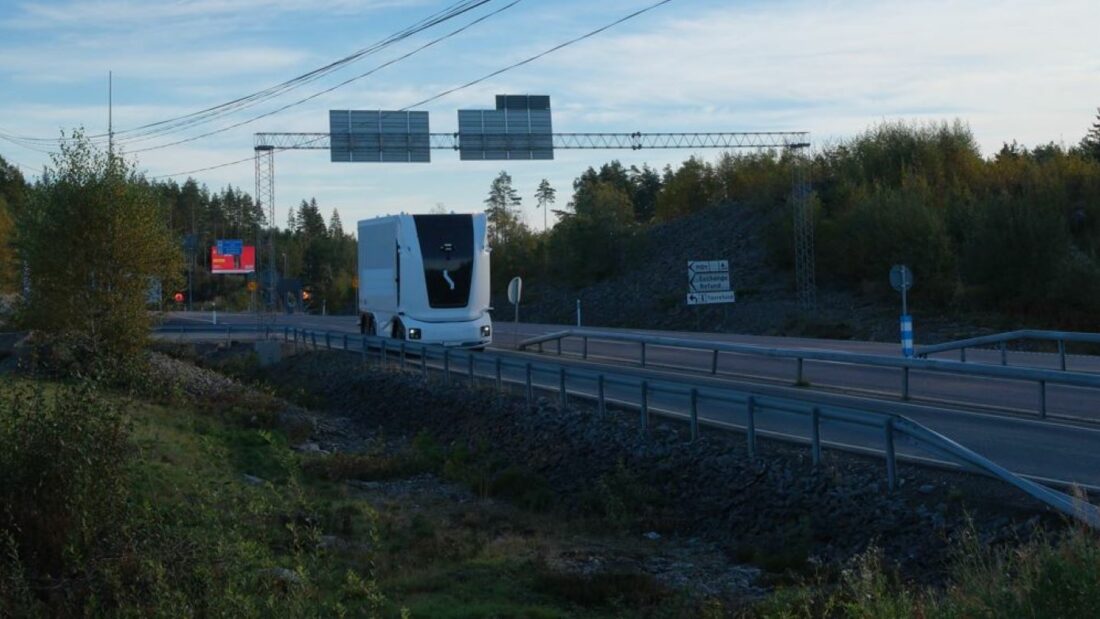The original article, published by the specialized magazine Diario del Transporte, presents an advancement that could well be a science fiction episode come true: the first border crossing and customs passage of a 100% electric and autonomous truck.
This milestone, led by the technology company Einride, is not just another press release; it is the materialization of a new paradigm for the sector, a watershed moment that demonstrates that the technological and ecological transition in heavy transport is technically viable today.
The event takes on a crucial symbolic dimension due to its location: the Ørje border crossing between Sweden and Norway. This is not just any crossing, but the setting where some of the most complex obstacles for autonomy were challenged and overcome: different national legislations and cumbersome customs procedures. The key to success was not only in the truck’s wheels but in the integration of its system with Norway’s digital customs solution, Digitoll. This allowed goods to be declared digitally in advance, replacing the tasks of a human driver and creating a digital “green corridor” that paved the physical way for the vehicle.
When delving into the characteristics of this new generation of vehicles, it is essential to understand that their value lies in the combination of two revolutions: electrification and autonomy. Electric trucks are characterized by the complete absence of exhaust emissions during their operation, eliminating local pollutants like CO2 and NOx. Their motor is remarkably quieter, reducing noise pollution. As for range, which is usually the big question, it already covers a wide spectrum of logistical needs. The following table illustrates the approximate real range that current technology can offer:
| Route and Truck Type | Approximate Range | Key Characteristics |
| Urban and Regional Distribution | 150 – 350 km | Designed for predictable routes. Allows for overnight charging at depots. Ideal for the “last mile”. |
| Long-Distance Transport | 480 – 800 km | Incorporates high-capacity batteries and advanced energy management systems. Requires an ultra-fast charging network on corridors. |
However, range is not a static figure. Factors such as cargo weight, terrain topography, and weather conditions influence it. Therefore, the artificial intelligence of the autonomous system is key: it optimizes the route and driving to maximize energy efficiency. Furthermore, ultra-fast charging is a vital complement; some models can recharge from 20% to 80% of their battery in less than 45 minutes, making long-range operations viable.
This technical advance would have limited value if it were not for its positive environmental impact, which is, perhaps, its greatest virtue. By replacing diesel trucks, they avoid the emission of greenhouse gases and harmful particles, directly contributing to improved air quality and the fight against climate change. They represent the concretization of the European Green Deal objectives, transforming transport, one of the most polluting sectors, into a net-zero emissions activity.
Finally, it is crucial to contextualize that this achievement is a component of the EU-co-funded MODI project and a joint effort by Swedish and Norwegian partners, including the logistics operator PostNord. What was tested at Ørje was not an isolated prototype, but a link in a future logistics chain, one that is smarter, safer, and more sustainable. The Diario del Transporte article does not just document a record; it is showing us the first glimpse of a new era that has already begun.
Have any thoughts?
Share your reaction or leave a quick response — we’d love to hear what you think!





